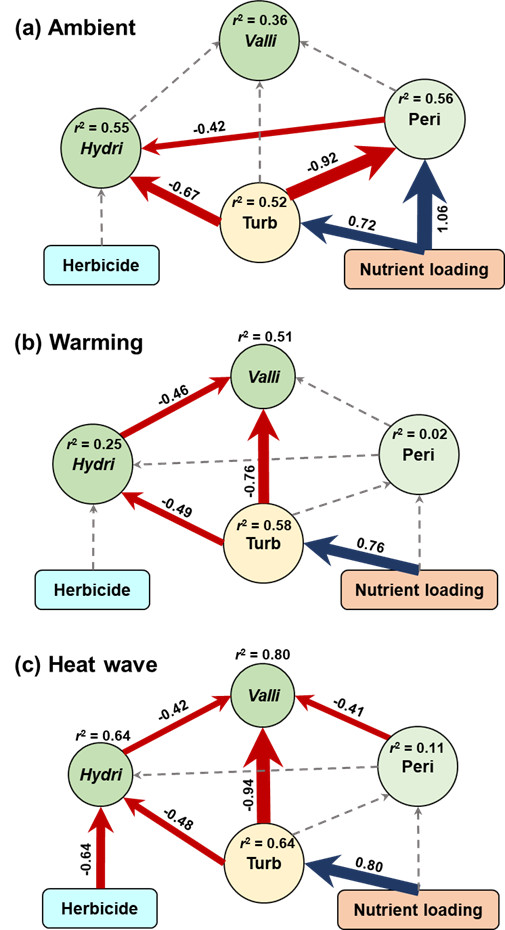Highlights
Multiple Stressors Can Interactively Lead to Deterioration of Aquatic Ecosystems
Multiple stressors could account for this decline, such as climate change, eutrophication and herbicides pollution. Previous studies mainly focused on effects of a single or two combined stressors on this process, the interactive effects of multiple stressors have largely been overlooked.
A research team led by Prof. XU Jun from the Institute of Hydrobiology (IHB) of the Chinese Academy of Sciences demonstrated that heat waves, eutrophication and glyphosate herbicides can interactively lead to loss of submerged aquatic plants and boost the growth of phytoplankton. The results were published in Environment International.
In this study, the researchers used 48 climate change simulation mesocosms (2500 L each) to test the single and combined effects of climate warming (continuous warming and with multiple heat waves), nutrient loading, glyphosate herbicides and their interaction on shallow aquatic ecosystems.
The researchers first analyzed the impacts of multiple stressors on the growth of different primary producers. “As expected, we found that nutrient loading increased phytoplankton biomass and suppressed the growth of submerged aquatic plants, while herbicides alone did not affect primary producers. However, heat waves rather than continuous warming exacerbate impacts of nutrient loading and herbicides on submerged aquatic plants,” said Prof. Xu.
Further structural equation models analysis confirmed that multiple stressors affected the competition of primary producers, and their effects depended on the combination of the stressors and the species.
The results demonstrated that multiple stressors can eventually lead to a loss of submerged aquatic communities and shift to phytoplankton dominance, increasing risk of regime shift, and leading to deterioration of shallow aquatic ecosystems.
This study provides the first mesocosm experimental evidence at its scale that multiple stressors can interactively lead to loss of submerged aquatic plants. In light of their findings, identifying multiple stressors and understanding their interactively effects are extremely important for future shallow aquatic ecosystems management, particularly under current global climate change.

Summarized results by structural equation models (Credit: IHB)
(Editor: MA Yun)